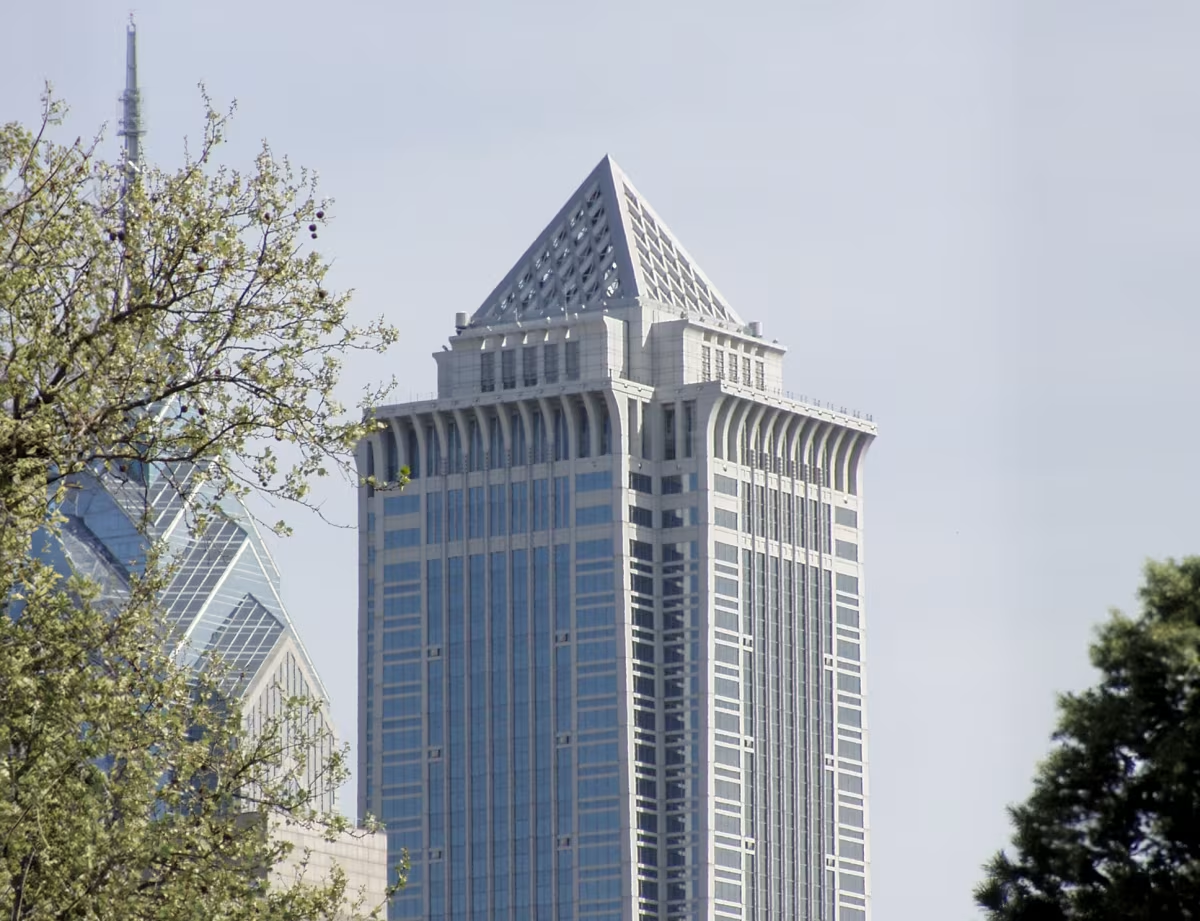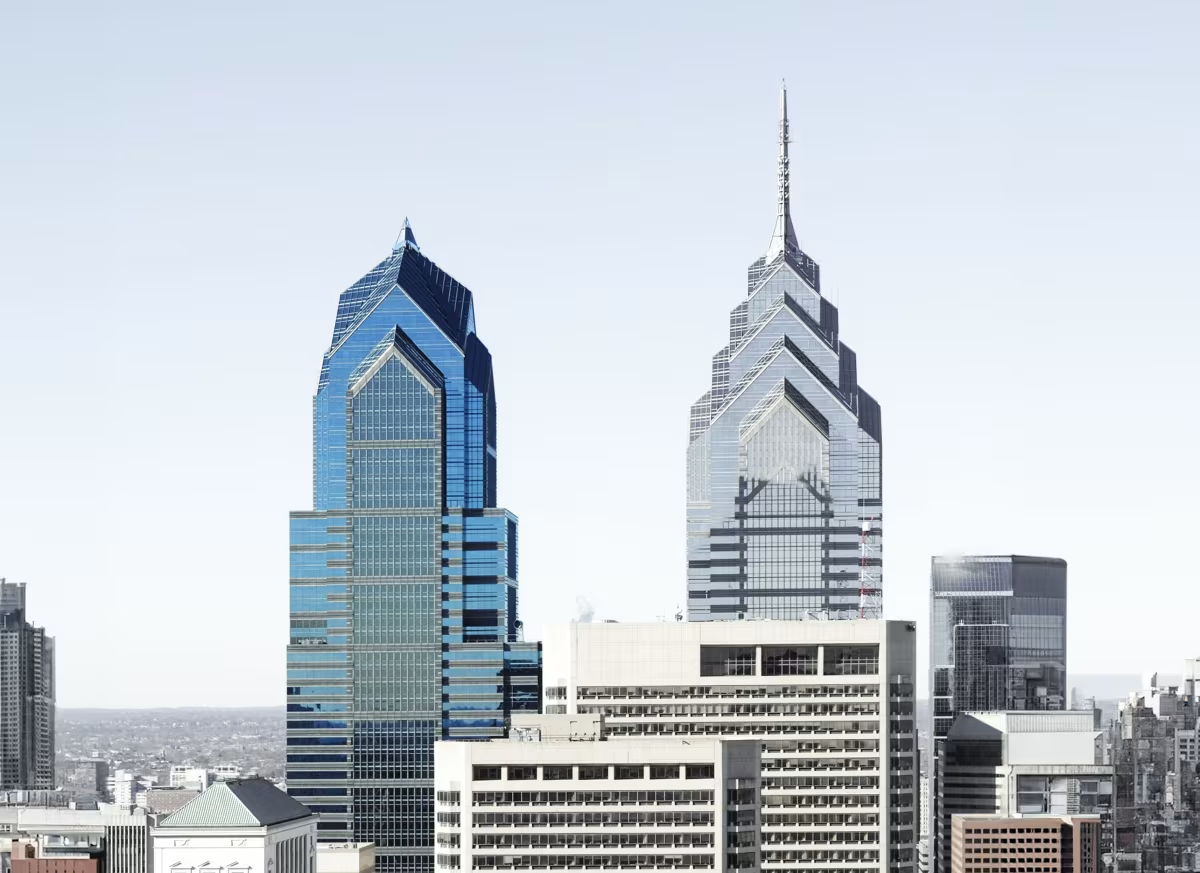BNY Mellon Center Philadelphia Building vs Two Liberty Place Building


Comparing the BNY Mellon Center Philadelphia Building and the Two Liberty Place Building is interesting because they both stand in Philadelphia, PA, and were completed in the same year, but they were designed by different architects.
This offers a unique glimpse at how rival designers approached projects in the same city during the same era.
Height & Size
The Two Liberty Place Building is clearly the larger tower of the two, both in terms of height and number of floors. It rises to 846ft (258m) with 58 floors above ground, while the BNY Mellon Center Philadelphia Building reaches 791ft (241m) with 54 floors above ground.
Of course, each project may have faced different briefs or regulatory constraints, which we don't really know about and could also explain the outcome.
Architectural Style
Both the BNY Mellon Center Philadelphia Building and the Two Liberty Place Building were designed in line with the aesthetic conventions of the Postmodernism style.
At the time, this style was at the height of its popularity. So both Kohn Pedersen Fox Associates and Murphy/Jahn Architects followed what was in many ways expected of them, producing designs that fit comfortably within contemporary architectural norms, rather than breaking with convention.
Uses
The Two Liberty Place Building follows a mixed-use model, combining residential. In contrast, the BNY Mellon Center Philadelphia Building has remained primarily commercial.
Originally, the Two Liberty Place Building was designed for commercial, but over time it was converted to mixed. The BNY Mellon Center Philadelphia Building by contrast has maintained its original role.
The Two Liberty Place Building offers 113 residential units.
Both towers provide significant parking capacity, with BNY Mellon Center Philadelphia Building offering 160 spaces and the Two Liberty Place Building offering 750.
Structure & Facade
The two towers rely on different structural systems, reflecting distinct engineering strategies.
The BNY Mellon Center Philadelphia Building uses a Frame structural system, which relies on a regular grid of columns and beams to sustain its weight, while the Two Liberty Place Building uses a Framed Tube In Tube system, that combines a strong central core with a perimeter tube of columns.
Yet, when it comes to their facade, they both employed the same solution, a Curtain Wall facade.
A curtain wall is a non-load-bearing facade hung from the structural frame. It is anchored to floor slabs and transfers only its own weight and wind loads, allowing for sleek, glassy exteriors.
| BNY Mellon Center Philadelphia Building | Two Liberty Place Building | |
|---|---|---|
| Kohn Pedersen Fox Associates | Architect | Murphy/Jahn Architects |
| 1988 | Construction Started | 1988 |
| 1990 | Year Completed | 1990 |
| Postmodernism | Architectural Style | Postmodernism |
| Commercial | Current Use | Mixed |
| 54 | Floors Above Ground | 58 |
| 241 m | Height (m) | 258 m |
| 137,071 m² | Usable Area (m²) | 110,000 m² |
| Frame | Structure Type | Framed Tube In Tube |
| Steel And Concrete | Vertical Structure Material | Steel |
| Steel And Concrete | Horizontal Structure Material | Concrete |
| No | Facade Structural? | No |
| Stone, Glass, Aluminum | Main Facade Material | Glass, Steel, Granite |
| CommonWealth REIT | Developer | Rouse & Associates |
| WSP Cantor Seinuk | Structural Engineer | Thornton Tomasetti |
| PA | State | PA |
| Philadelphia | City | Philadelphia |
| 1735 Market Street | Address | 1601 Chestnut Street |